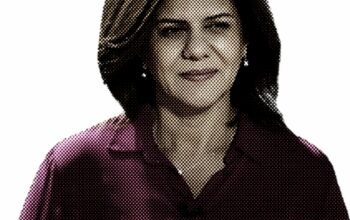“Intersectionality is a lens through which you can see where power comes and collides, where it interlocks and intersects”, Kimberlè Crenshaw

In recent years there has been much discussion about the impact that racial, gender-based and class-based discrimination and discriminatory practices have on society. According to Dr. Kimberlè Crenshaw, a pioneering scholar and writer on civil rights who coined the term intersectionality, we can define it as the complex, cumulative way in which the effects of multiple forms of discrimination combine in the experience of marginalized individuals or groups. Crenshaw laid out her theory of intersectionality for the first time in 1989, more than thirty years ago, when she published a paper in the University of Chicago Legal Forum titled “Demarginalizing the Intersection of Race and Sex”.
According to some people, the theory posted by Dr. Crenshaw represents a “new caste system” or a “conspiracy theory of victimization”. The criticism is about the fear that it could replicate existing power dynamics and cultural structures just to give, for example, people of colour power over white people. Some conservatives say the concept of intersectionality — the idea that people experience discrimination differently depending on their overlapping identities — isn’t the problem, on the opposite the idea is more or less indisputable. Conservatives believe, instead, that it could be used against them, making them the victims, and they think intersectionality isn’t just describing a hierarchy of oppression but, in practice, an inversion of it.
Dr. Kimberlè Crenshaw has always stated that she wanted to get rid of those existing power dynamics altogether — changing the very structures that undergird the politics, law, and culture in order to level the playing field. Intersectionality is attempting to demolish racial hierarchies altogether. Let’s try to better understand what intersectionality is, how it is connected to social issues and how we can act to put it in practice. Intersectionality is a relatively new concept in public policy and much progress is needed in the way policies and laws address intersectional discrimination and inequality. An incomplete understanding of what constitutes intersectional discrimination, its workings and effects, leads to inadequate responses to intersectional discrimination. This comes together with the erroneous belief that categories are automatically inclusive of differences (for example. that the category “woman” is automatically inclusive of all women).
Intersectionality should encourage critical reflection that allows researchers and decision makers to move beyond the singular categories that are typically favoured in policy analysis. It should make us consider the complex relationships and interactions between other social locations and identities, such as Indigeneity, sexuality, gender expression, immigration status, age, ability and religion. This enables an examination of the simultaneous structures of oppression and domination, such as racism, classism, sexism, ableism and heterosexism.
The intersectionality theory mentioned above takes into consideration these principles:
- Human lives cannot be reduced to single characteristics;
- Human experiences cannot be accurately understood by prioritizing any one single factor;
- Social categories/locations, such as “race”/ethnicity, gender, class, sexuality and ability, are socially constructed, fluid and flexible;
- Social locations are inseparable and shaped by interacting and mutually constituting social processes and structures, which, in turn, are shaped by power and influenced by both time and place;
- The promotion of social justice and equity are of utmost importance.
A lot of associations and no profit organisations and also institutions that deal with human rights are making campaigns on social media and websites to raise public awareness about intersectional discrimination, and to provide insights and tools for professionals and activists to put intersectional inclusion into practice in their work. The aim of these campaigns is to promote understanding of the issue of intersectionality and the causes and consequences of multiple discrimination. As an association for sustainable development, I-Dare supported the campaign “Intersectionality Transforms Our Realities” developed by the North South Centre of the Council of Europe, aiming at improving the mainstreaming of intersectionality at large scale.
The campaign is part of the awareness-raising project “Promoting diversity and equality”. The project aims to reinforce gender mainstreaming in intercultural dialogue and interregional cooperation by providing large public with the means to deconstruct harmful stereotypes according to the context of their respective realities in Europe, the Middle East and Africa.All forms of inequality are mutually reinforcing and must therefore be analysed and addressed simultaneously to prevent one form of inequality from reinforcing another. For example, tackling the gender pay gap alone – without including other dimensions such as race, socio-economic status and immigration status – will likely reinforce inequalities.
“All of us live complex lives that require a great deal of juggling for survival, and that means that we are actually living at the intersections of overlapping systems of privilege and oppression”
That is what Linda Carty and Chandra Talpade Mohanty, two feminist scholars, have stated. To take an example, they explained, think of a homosexual African-American woman and a heterosexual white woman who are both working class. They “do not experience the same levels of discrimination, even when they are working within the same structures that may locate them as poor”. One can experience homophobia and racism at the same time, while the other may experience gender or class discrimination, but not racism.
If we don’t use an intersectional approach and equality and anti-discrimination policies, the discrimination patterns we seek to address are most likely to reproduce themselves. Processes of structural discrimination permeate all areas of society, including the fields of anti-discrimination and social justice. An intersectional approach ensures that no one is left behind in the fight for justice and equality. It ensures that communities and movements are inclusive of differences and work together towards equality. It prevents combating one form of discrimination at the expense of another.
Giudi Aligi
References:
World Economic Forum, Kyle Zimmer and Pavitra Raja (2021)
https://www.weforum.org/agenda/2021/10/here-s-how-organizations-put-intersectionality-to-work/
Columbia Law School
https://www.law.columbia.edu/faculty/kimberle-w-crenshaw
Vox, Jane Coaston (2019)
Center for Intersectional Justice
https://www.intersectionaljustice.org/what-is-intersectionality
Council of Europe, North South Centre (2021)
https://www.coe.int/en/web/north-south-centre/intersectionality
An Intersectionality-Based Policy Analysis Framework, Olena Hankivsky (2012)
Time, Arica L. Coleman (2019)
https://time.com/5560575/intersectionality-theory/



